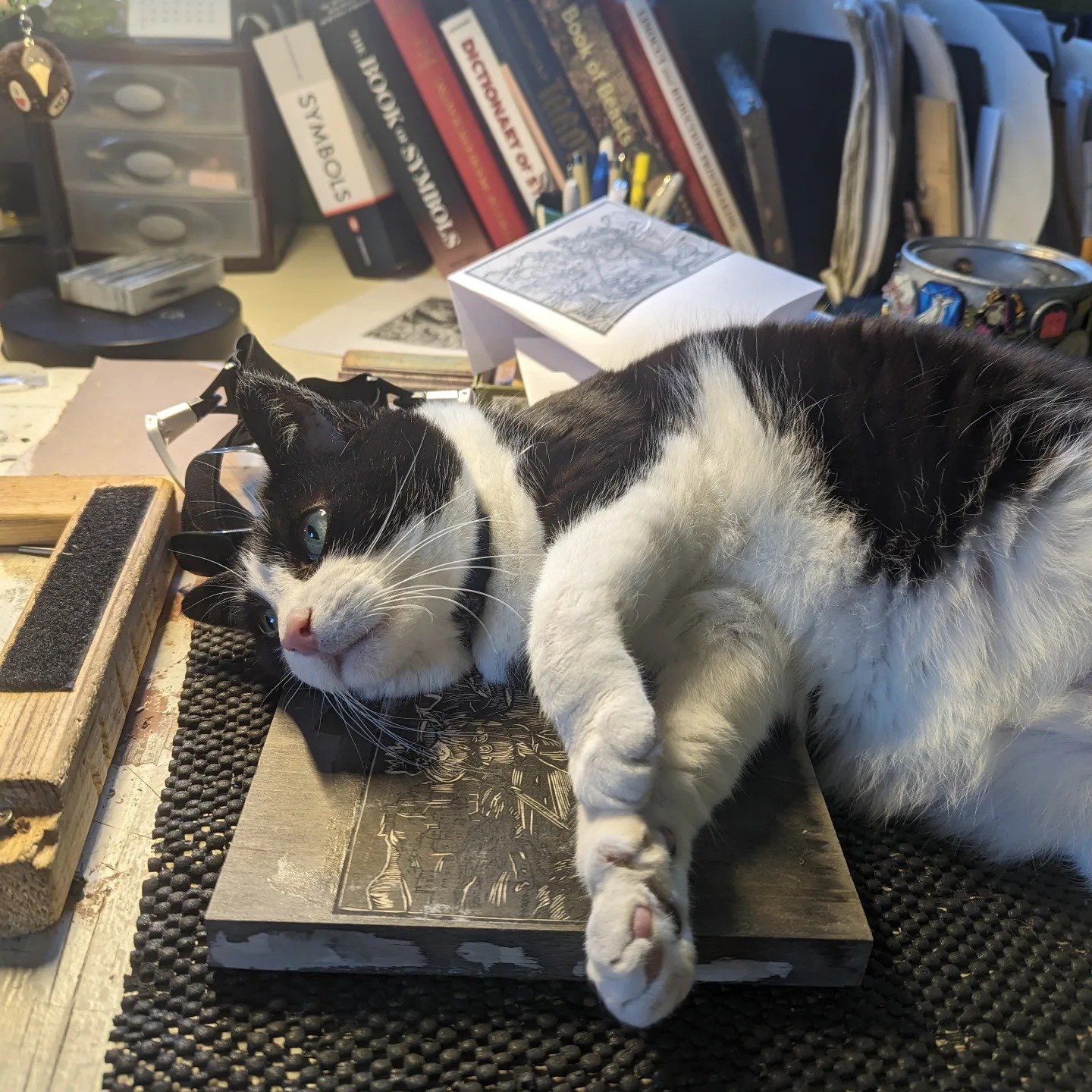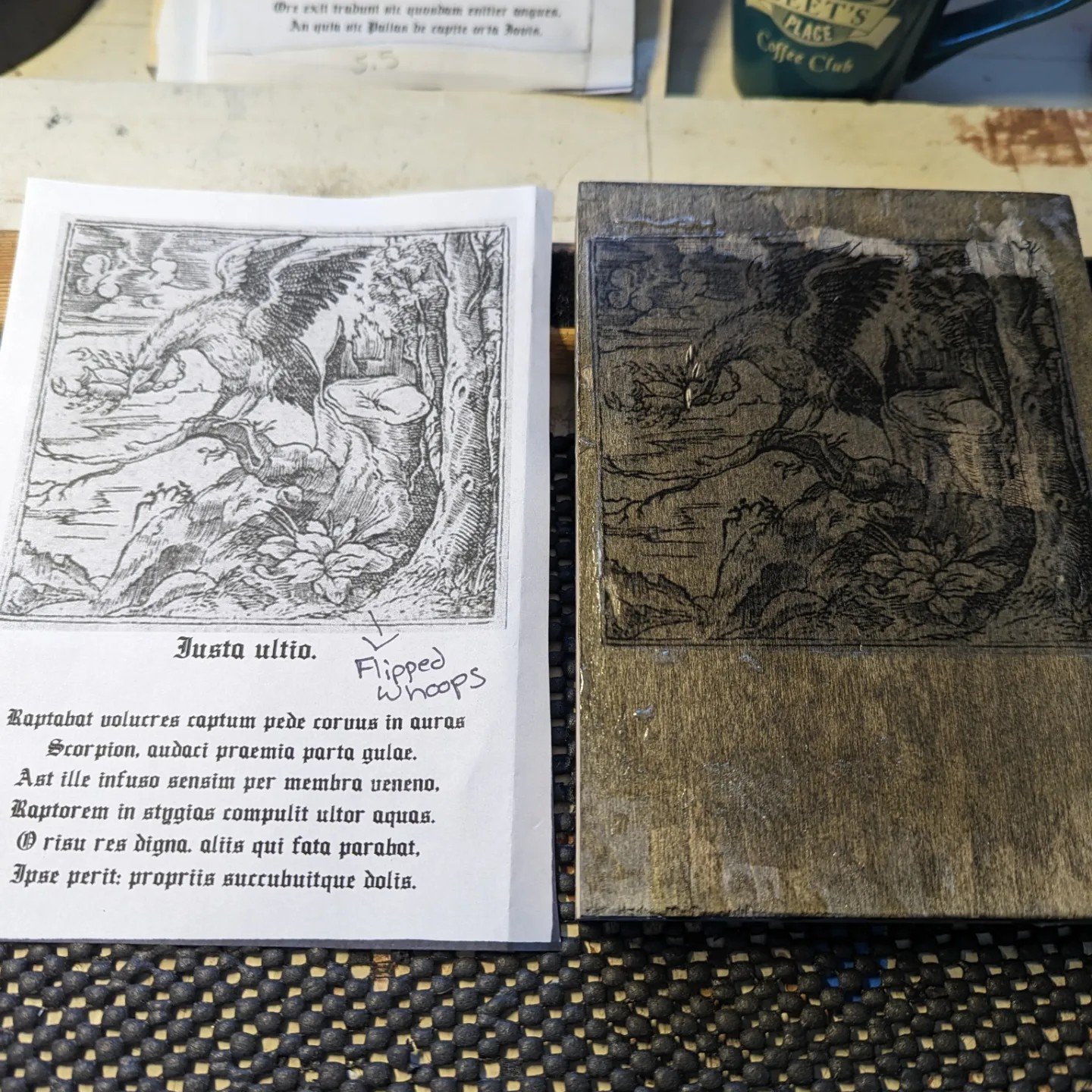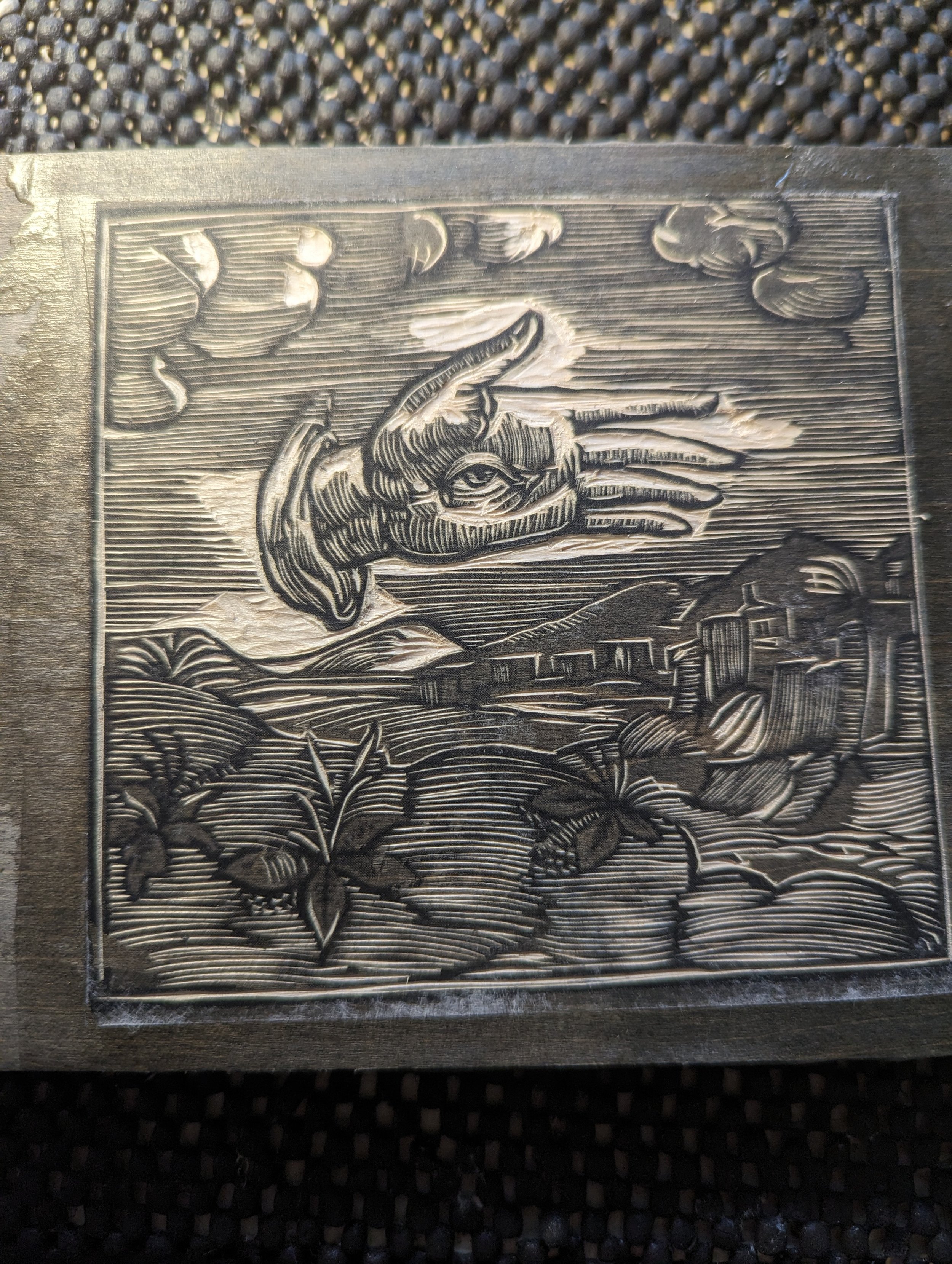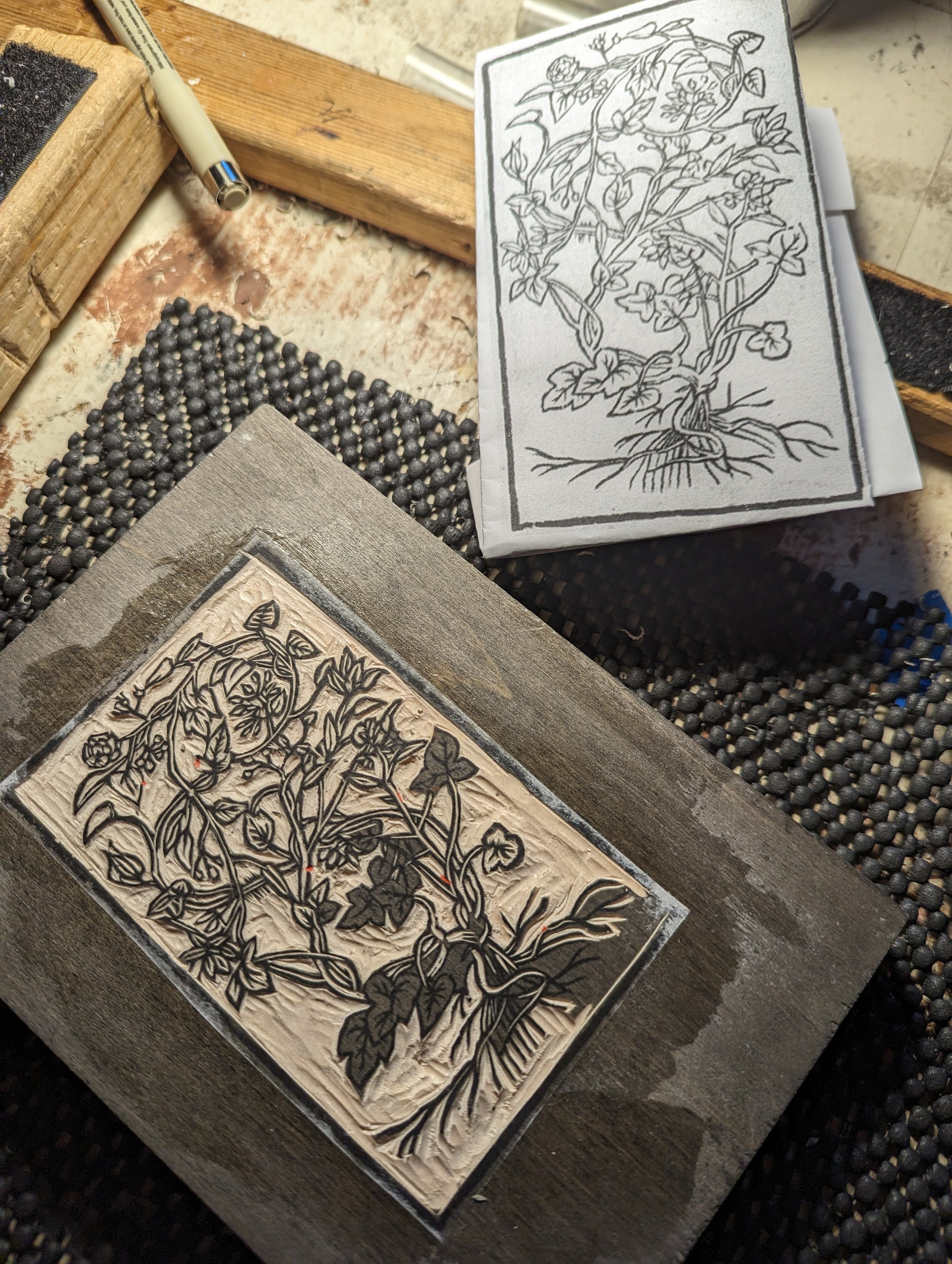
Emblematum liber Project
Emblem books are a collection of allegorical images with text, most popular in the 16th and 17th centuries.
Andrea Alciato wrote the first and most widely disseminated emblem book, Eblematum liber or Emblemata in 1531. For the next 100 years, new editions were published with additional emblems and new woodcuts.
I reproduced several emblems over the years as a way to hone my skills in block printing, but I never really bothered to dig deeper into the overall meaning and origins of the images. Opportunity arose when I was taught how to create simple leather-bound journals. I now had an excuse to reproduce my own (albeit very small) edition of Emblemata.
The Plan & Status
11 emblems from Emblematum liber plus a title page using editions spanning from 1531-1621.
Carve 2 emblems per month starting in Jan 2024 (going from most complicated to least complicated)
Create leather bound book
Finish by Oct 2024
Current Status : Finished on Aug 11 2024!
Supplies
5x7 soft maple woodblocks
Paper: BFK Rives, Cream
Ink : Cranfield Caligo Safe Wash
Bookmaking supplies and leather: Tandy Leather
Typesetting : Boxcar Press
Office Assistants : 2 cats
Emblem #1
I started off by forgetting Rule 101 of printmaking : remember to flip the image on the wood before carving. Given how many mistakes are in the various editions of Emblemata, I decided to keep going.
This emblem took me 7 hours from first carve to test print, and is the most complex of the emblems I’ve chosen.
Emblem #2
The story attached to this imagery is that of Circe from Homer’s Odyssey. The “moral” is a very misogynist one… shocker.
Emblem #3
I’ve seen this imagery in a lot of places outside of my research into emblems. I had always thought it had something to do with being “all seeing”. However, this image is suppose to convey that one should stay calm and in control.
Emblem #4
I chose this purely because it reminded me of The Neverending Story.
Emblem #5
This one doesn’t really have much of a story or moral but is more a description of an ivy plant.
Emblem #6
This emblem is suppose to represent Penelope’s choice to marry Odysseus in the Odyssey over fidelity to her father. In other editions it’s more visually descriptive as it shows both her father, Icarius, and Odysseus by her side. She veils her eyes to show her choice.
Emblematum liber editions became more detailed in the 1600s (see Emblem #1). As I move from more to less detailed with each woodcarving, I’m getting closer to the original edition in the 1530s.
Emblem #7
Another example of an emblem that mentions something not pictured. Triton (center) is said to be blowing a trumpet.
The serpent represents eternity and the trumpet represents fame. The moral is that if you’re smart and noble, you’re essentially immortal.
Emblem #8
Early in learning how to block print, I stumbled upon this emblem in museum digital archives. It purports to tell one how create an amulet “to prevent merciless love overcoming you, to prevent any woman plundering your mind with magic arts”.
Having been through a bad divorce and not feeling so great about life, I ordered a ring with the emblem’s title “Inviolabiles telo Cupidinis” engraved on the inside. It serves as a reminder to be kind to myself. I jokingly call it my anti-wedding ring.
Emblem #9
Based on the Greek Epigram, “where bees nest in what were once the beaks (projections at the prow) of war-galleys.”
Emblem #10
This emblem is from the original edition published in 1531. The quality of the woodcut (along with #11) are simpler and cruder than ones printed even just a few years later.
The moral is to keep up hope, even during troubling times. .
Click the link below to compare the 1531 and 1536 designs.
Emblem #11
This is the first emblem of the first edition of Emblematum liber (1531). As with Emblem 10, it’s crudely designed compared to later editions.
The emblem is the insignia for the Duke of Milan, who was a part of the Visconti family. The author had studied in Milan and the first editions published in Italy, so this would have been a common symbol seen around town.





















































